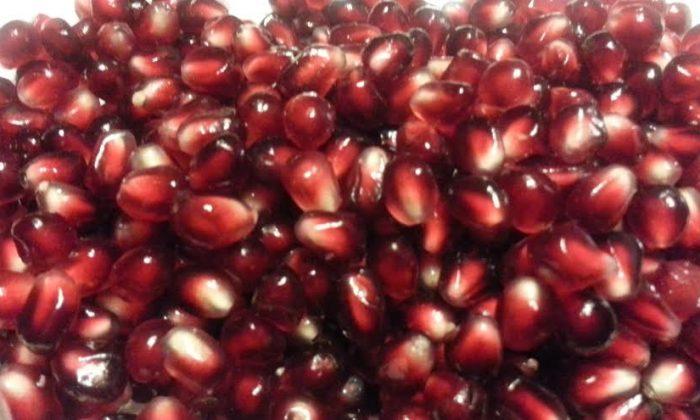On New Year’s Eve, it can be fun to share a cultural food tradition that symbolizes health and prosperity for the future. What I find interesting is that many of these traditions are associated with some of the healthiest foods on earth. Pomegranates are eaten in Mediterranean countries as a symbol of abundance and fertility. At the same time when consumed regularly, they fight inflammation due to their high anti-oxidant content and as a result can reduce the risk of disease. Pomegranates support the immune system, and are a good source of fiber that helps remove excess cholesterol and toxins from the body. They also can help boost the immune system, improve circulation, and lower blood pressure.
Grapes are consumed on New Years as a Spanish tradition. Twelve grapes are eaten at midnight, each one representing a month of the year. Any sour ones are believed to be associated with a bad month or months during the upcoming year. Health-wise, purple grapes are high in flavonoids, a compound that gives them their rich color and is protective of our health. Flavonoids have been associated with reducing blood clots, and protecting LDL cholesterol from free radical damage and ultimate injury to our arteries. Round fruits also are consumed in some cultures as a New Year’s tradition. Fruits are rich in nutrients, such as Vitamin A and Vitamin C, manganese, and potassium. They are excellent fiber sources as well.
Green cabbage is often eaten at the New Year as a symbol of “green money” and the bringing of future prosperity. Consuming cabbage on a regular basis has been associated with a reduced risk of cancer, especially of the lungs, stomach, and colon. Cabbage also is a an excellent source of vitamin C that has anti-oxidant properties, helps to boost our immune system, and helps body transform iron into a more absorbable form.
Lentils are a popular New Year’s tradition in Italy because of their greenish color and they actually look like small coins. Similarly, black-eyed peas resemble coins and are a popular southern tradition at the New Year. Lentils are rich in fiber and folate, which are supportive of heart health, and contain substances that have anti-oxidant properties. Black-eyed peas are high in magnesium, calcium, and iron. They also are good sources of folate, manganese, and Vitamin A, and like all legumes, they are rich in fiber.
If we can begin our New Year with some fresh fruits and vegetables, and/or legumes with an eye toward its real health benefits, maybe we can proceed consuming these foods throughout the year. To me, this is one of the surer ways to address our health every day and year of our lives. As far as prosperity, it most certainly will come when health is viewed as wealth.
Wishing everyone a Happy and Healthy New Year!






Friends Read Free